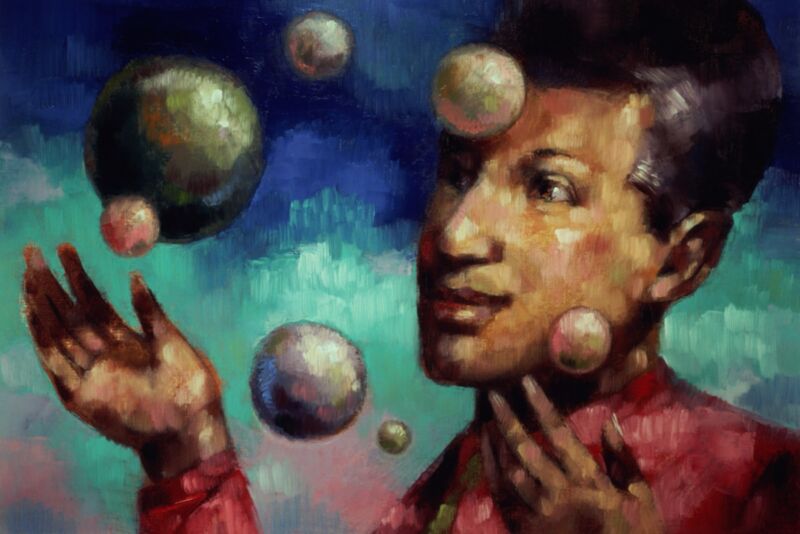Scientists ponder how jugglers seem to defy limits to human reaction times

Enlarge / Scientists have long been fascinated with the math and mechanics of juggling. (credit: Todd Davidson PTY LTD/Getty Images)
The fastest expert jugglers can make nearly 500 catches per minute, which translates into just 120 milliseconds per catch-faster than human reaction times even in high-speed sports like tennis, in which a player typically takes 200 milliseconds to adjust their performance. The Guinness world record for juggling is currently 11 balls. Troy Shinbrot, a biomedical engineer at Rutgers University, and Rutgers undergraduate math major Jonah Botvinick-Greenhouse explored the question of how expert jugglers can achieve these remarkable feats in a recent article in Physics Today.
Master jugglers are clearly very good at multitasking, and since balls aren't being thrown randomly, each ball need not be tracked and caught independently. But Botvinick-Greenhouse and Shinbrot still wondered how it was possible for jugglers with reaction times of 200 milliseconds to routinely catch balls every 120 milliseconds. "Jugglers rely on making accurate throws and predictions of where the balls will travel," the authors wrote. "The accuracy required is a measure of how unstable-and thus how difficult-a particular juggling pattern is."
Juggling has a long and glorious history dating back to ancient Egypt; there are hieroglyphics circa 1994 and 1781 BCE that historians consider to be the earliest historical record of juggling. There were juggling warriors in China (770-476 BCE)-apparently it was viewed as an effective diversionary tactic-and the practice eventually spread to ancient Greece and Rome. By the mid-1800s CE, juggling was largely practiced by circus and street performers, and it has fascinated scientists since at least 1903. That's when Edgar James Swift published a paper looking at the psychology and physiology of learning in the American Journal of Psychology, which discussed the rate at which students learned to toss two balls in one hand.
Read 13 remaining paragraphs | Comments